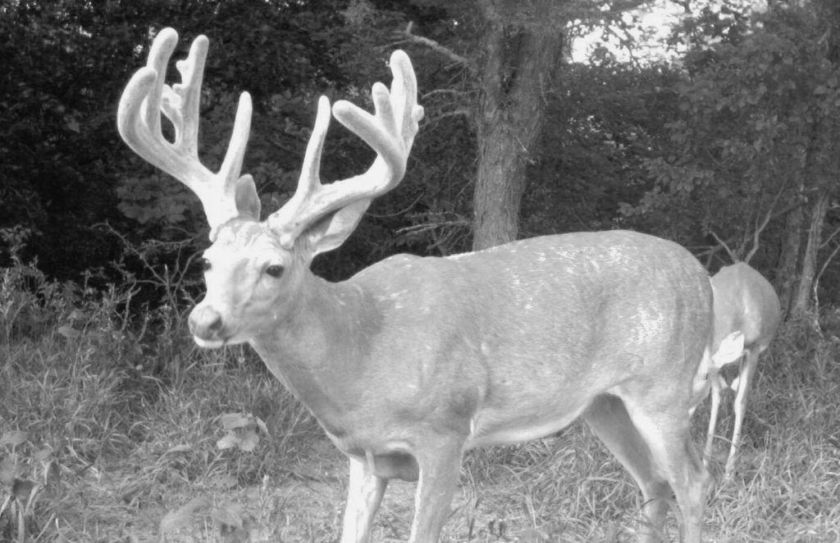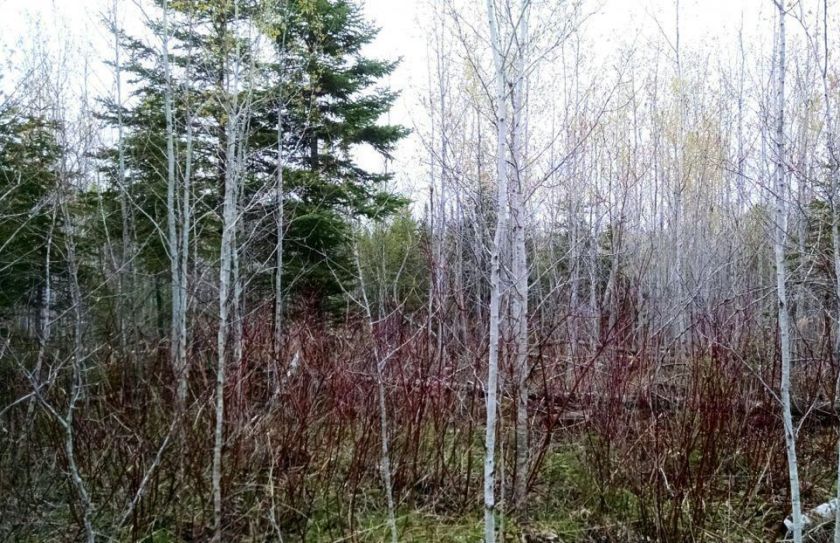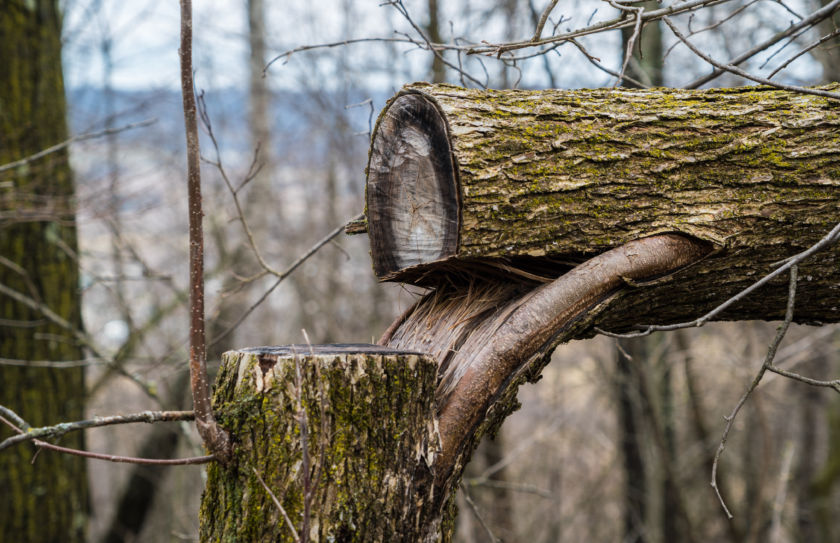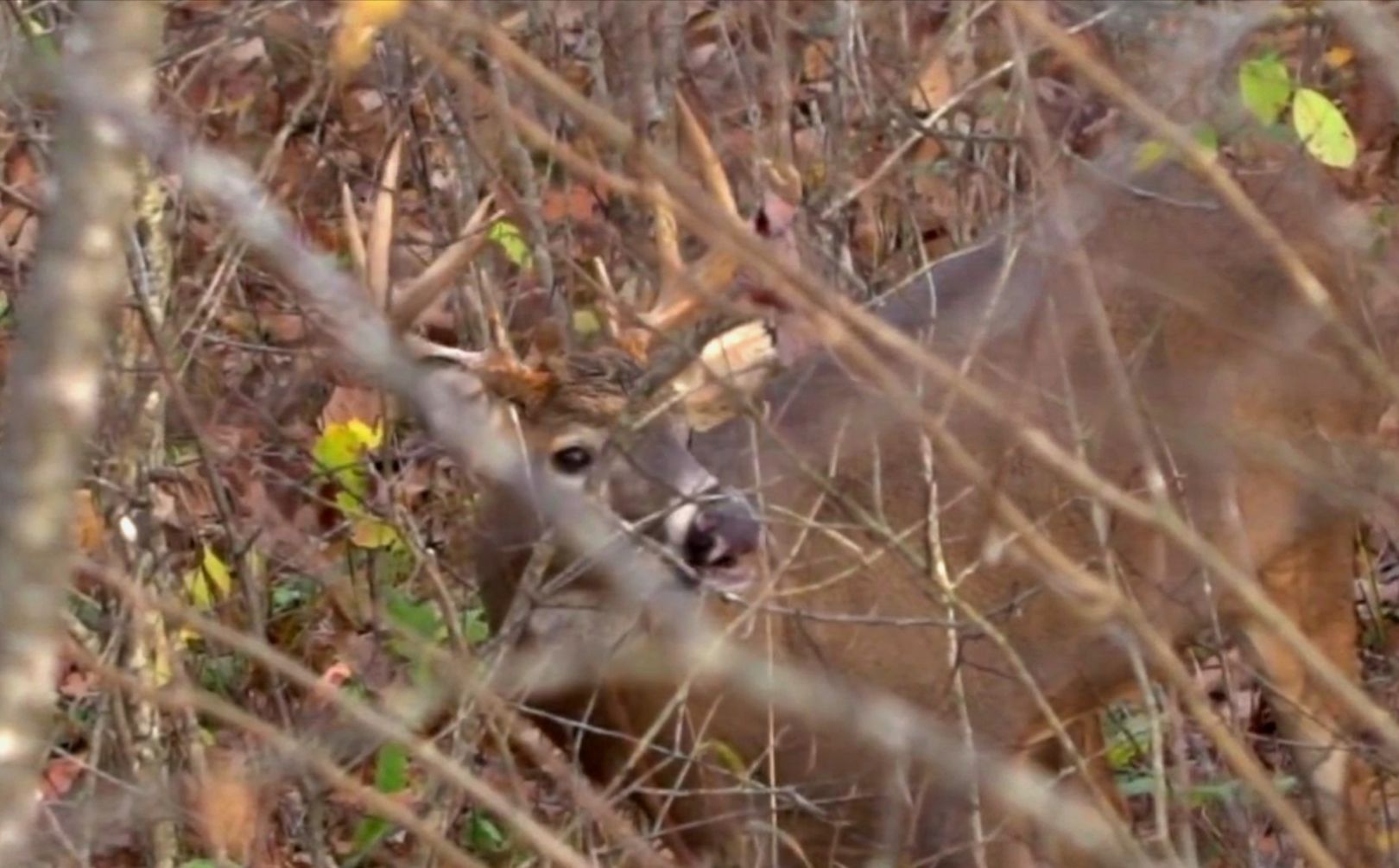
Creating deer browse is important but by itself it is highly overrated. Whitetail browse only represents one portion of the 24 hour daily food categories for deer and if you don't have afternoon and nighttime food sources too, you will severely limit your entire deer potential. On private land a great whitetail browse strategy alone is not enough, and it isn't even close. Understanding the value of daylight whitetail food sources and how a deer relates to each food source, is your ticket to maximizing your land, efforts and opportunity to create a great herd and hunt. There are 3 important browse and food strategies for you to consider on your private land, including: Daytime bedding, afternoon movement definition and an all-season food focus.
*While whitetail browse can't be missed if your goal is to attract, hold, grow, build and hunt the best deer herd in the neighborhood, whitetail browse alone will only allow you to scratch the surface of attaining your private land Whitetail Goals.
Daytime Deer Bedding Browse
Attracting and holding deer to specific locations on your land is where the potential of creating quality whitetail browse really shines! When 40 acres is cut to create deer browse, you lose the opportunity to define exactly where deer bed on a daily basis. A doe family group of several individual does and fawns, does not need more than 1-2 acres of deer bedding area and browse, and neither does a mature buck. Here are 3 deer bedding browse practices for you to follow, so that you can work towards creating an adequate deer browse strategy on your land:
- Less Can Be More - Simply, 1 acre clearcut and hinge-cut pockets define movement to and from those pockets at a much higher level than 10, 20 and 40 acre or more cuttings.
- Separation of Quality - I often recommend a general timber stand improvement practice that creates a 4 to 6 out 10 in bedding cover quality for 50-80% of a particular parcel, combined with the installment of smaller highly defined daytime browse pockets representing 20% of the land or less, that carry a bedding cover quality level of 8 to 10 out of 10. With a primary goal of improving the entire habitat on your parcel, you can still work to drastically increase the carrying capacity on a large scale across the core Sanctuary Area of your land, while still maintaining a high level of defined daily movement opportunity.
- Adequate Whitetail Browse - Like most things in life, too much of a good thing is not a good thing. The same can easily be said for deer browse. The perfect deer browse types include hardwood regeneration, shrub tips, broadleaf weed growth, briars and even a few acorns. From hidden idle field conversion bedding areas to open hardwoods, there are many browse species that can help you find an adequate daytime deer browse solution. Creating a 10 out of 10 for bedding cover value, should still only give you a 4 to 5 out of 10 when it comes to the overall food value. While it may be tempting to include clover, alfalfa and apple orchards within a bedding area, deer do not need a high quality level of deer browse to be fully focused for the entire season, within a particular bedding area. In fact, if the level of quality is too high within a whitetail's bedding area, you limit the potential for deer to leave their bedding areas and travel to their favorite afternoon food source, before dark. Highly defined deer browse bedding areas and general timber stand browse improvement areas should have 1 thing in common: An overall food quality level of 4 to 5 out of 10. Maintaining a separation of food values between daytime browse and afternoon food sources, insures that deer will predictably move and be exposed to your hunting efforts, during the morning and afternoon hours.
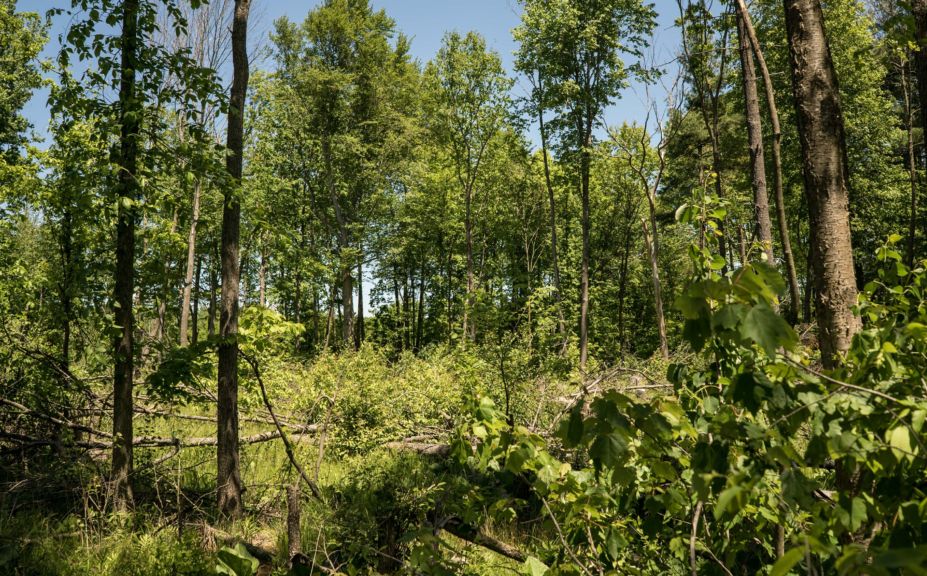
*A chainsaw can be your best friend when it comes to creating daytime bedding browse. However, from timber harvest to TSI to canopy reduction cuts, there are many ways to get the job done. Your cuttings may or may not, include Hinge Cuts.
Afternoon Food Source Movement Setups
By (1) creating adequate food value in your deer bedding areas but not perfect, by (2) creating bedding areas 1 to 2 acres size and not 20 acres and finally (3) by making sure that you have high quality afternoon food sources on your land like an apple orchard or food plot; you can create a precision daylight deer movement that you can build an entire herd and hunt around! Quality afternoon food sources should last the entire 3 months or more of the deer season, which narrows your choices of quality afternoon offerings down to food plots, apple orchards and occasionally ag field rotations. Your deer whitetail browse creations should accomplish 3 things:
- Make your entire parcel more attractive and increase the carrying capacity of the land for deer and all other sorts of other critters.
- Define Doe Bedding opportunity adjacent to your afternoon food sources.
- Create the ability thru precision bedding locations, for you to move deer on highly defined food to bedding travel routes.
By completing general TSI improvements, creating doe bedding adjacent to major food sources and creating micro bedding areas that compliment the opportunity for precision daily deer movements, you can easily set the table for season-long patterns of daylight deer movements. Deer browse and rarely food plots alone, can create consistent and defined daytime deer movement for you. If your goal is to create a high quality herd and a high quality hunt, then you can't have one without the other.
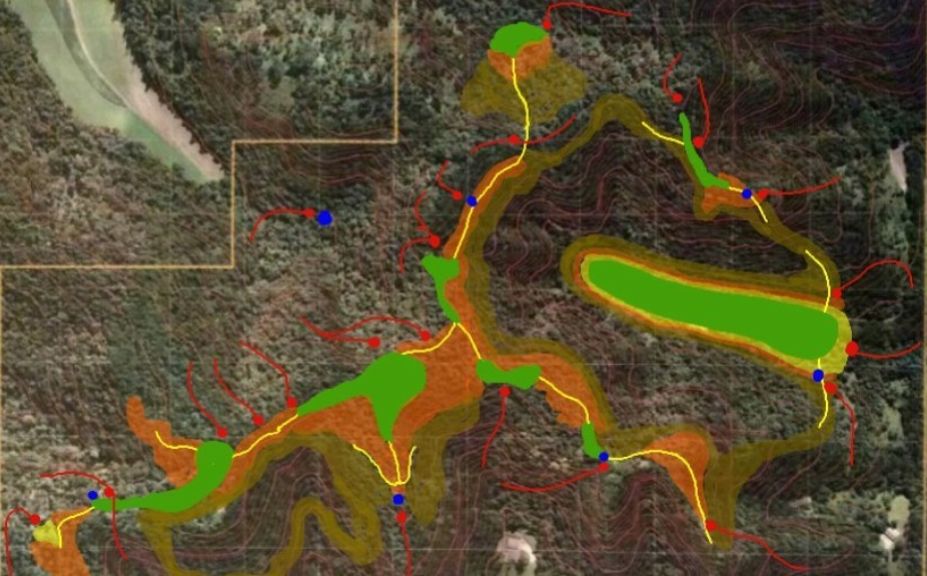
*On this particular WI bluff country parcel, clearcut browse pockets (orange) will be used to hold deer adjacent to high quality afternoon food plot food sources (green), while general TSI browse cuttings will be used to increase the overall carrying capacity of the entire parcel. Do you have an overall deer plan for you land? Here are 5 signs that your Whitetail Design is working.
All-Season Deer Browse and Food Focus
Deer feed 5 times in a 24 hour period as rhythmic pattern feeders, which means twice during their bedding areas, once in the afternoon and twice during the night. While daytime browse and afternoon food sources can be used to effectively control daily daylight deer movements to satisfy your herd and hunting objectives, the food and security of your improvements need to last the entire season as well. Spooking deer out of bedding areas and food plots due to poor hunting practices, can actually hurt you more than the improvements can help in the first place. Also, when food plots are ravaged by over-browsing and a lack of food plot efficiency while failing to last past December, then no level of browse or food plot quality can help you out.
Attracting every deer in the neighborhood to your land only to have your food sources and daytime browse areas be devalued due to hunting pressure and over-use, can be a much greater risk than you may realize. The attract:repel condition that can be created when habitat improvements fail to last in volume, security or both, can severely limit your ability to create a quality herd and hunt. In fact in many cases failing improvements can do much more harm than good because you expose the entire deer herd to extend travel and hunting exposure. Here are 5 strategies to make sure that the attractiveness of your deer browse, food sources and ultimately your entire parcel, lasts the entire season:
- Defined Bedding to Feeding Movements - The more precise your daytime bedding browse pockets, deer travel corridors and afternoon food sources are, the greater your ability is to define how and where you hunt. The more you can define your hunt based on daily deer movements, the greater your ability to avoid deer/human encounters all season long.
- Diverse and Consistent Food Plot Plantings - Single planting food plots have a life of typically 6-8 weeks at best. The more your plots are focused on beans and corn the less likely you are to hold deer the entire season and with a quality offering of greens, you can actually hold deer the entire season. Blending both grains and greens is a great focus, IF both can last the entire season, in 1 location. Make sure to keep your food plots all planted in the same variety of food plot forage options, if you expect to maintain the movements to those food sources for each month of the season. By maintaining the same food plot mix for the entire season in every food plot, you can create a highly efficient parcel where deer can be trained to relate peacefully to the entire parcel, and not just portions based on making levels of attraction and failure.
- Limited Summer Food Sources - This is the harsh reality about Summer food sources: Rarely do deer actually need the food in most Northern whitetail habitats and the greater the Summer food source, the greater the risk of creating a Summer fawning doe factory. Try letting your neighbor's feed deer during the Summer, and make sure that your land isn't too attractive during the Summer months. Why? Because Summer does and fawns that are "here today are here to stay". By keeping an appreciable number of does and fawns off of your land during the Summer, you can make sure that your late Summer planted plots actually have a great chance to grow and become established prior to deer moving onto your land during September and October. Thru personal experience on hundreds of parcels across the North 1/2 of the country, you need to count on twice as much food for the Fall hunting season, if you have carry high quality Summer food sources. Summer food plots are a great herd and habitat option that offers a feel good attraction to many land managers, when in reality they are often severely limiting landowner's chances of coming close to their annual herd and hunting goals. It pays to take a good hard look at the potential risk vs. reward of including Summer food sources within your overall habitat strategy.
- Junk Timber Opportunities - The higher the timber value in the form of oak, maple and cherry, the lower the wildlife value in general, and that especially includes whitetails, rabbits, grouse, quail and pheasants. Higher value browse species are not only attractive to a wide variety of wildlife species, but their regeneration value can be quiet prolific when it comes to creating a high volume of daytime whitetail browse. I personally would choose a 40 acre highly diverse habitat that includes poor timber species, upland, lowland and softwoods, over an 80 acre parcel full of marketable hardwoods. It can take 1 season to create an incredible whitetail parcel on a highly diverse low timber value chunk of habitat, compared to several years or more while still lacking the needed diversity in the end, with a high value mono-culture hardwood parcel. Do you have junk timber? That really is a great ingredient if you are not only creating whitetail browse, but attempting to create a whitetail and wildlife combination dream parcel.
- Deer Movement Sweeteners - Once you have the design of your daytime browse pockets, overall timber management, afternoon food sources and deer travel created, don't forget the deer movement sweeteners! Adding mock scrapes, deer waterholes and minerals where appropriate and adjacent to stand locations where legal, can be the last pieces of the puzzle to keep deer attracted, focused and their movements defined, all season long.
*Creating small micro-cuttings for daytime whitetail browse opportunities, may be your greatest timber habitat improvement for whitetails that you can add to your land!
Conclusion
Deer browse alone isn't enough. While deer browse may be the only answer based on resources or location, browse unfortunately can't offer the precision of daily movement required to attract, hold, mold and create quality herds or hunts. However, daily whitetail browse creations are still an extremely portion of the daily food source puzzle of potential whitetail habitat improvements. In fact, combining afternoon food sources with deer bedding area browse on your land, can create the most attractive, herd-influencing parcel in the neighborhood.
